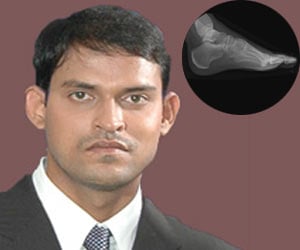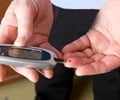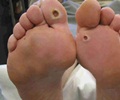What are the Symptoms and Signs of Charcot Foot?
Symptoms of Charcot foot may be acute or chronic and affect one or both feet.
Charcot foot may develop within weeks or may be a slow process developing over months. The usual clinical features in a patient with Charcot foot are:
- Either one or both feet may be affected. The affected foot and ankle appear warm, swollen and red.
- Most of the patients are in their 50s or 60s and usually report late due to lack of pain in the initial stages. Though the patients do complain of pain when they arrive at the hospital, the degree of pain is usually much less as compared to the local features.
- The condition often follows trauma to the foot or ankle, though not all patients are able to recall it.
- On examination, sensation over the foot may be lost. Foot drop may be observed. Ulceration and deformity may be present.
Charcot foot is classified into stages by different classification systems depending on the extent of disease and radiological findings. One of the classifications is as follows:
- Stage 0: Stage 0 is the prefragmentation or acute inflammatory stage. Early diagnosis and treatment in this stage can prevent long-term complications.
- Stage 1: Stage 1 is the development stage where the patient suffers from fractures and joint dislocations.
- Stage 2: Stage 2 is the subacute or coalescence stage where resorption of bone debris takes place.
- Stage 3: Stage 3 is is the consolidation or reparative stage resulting in fusion of the affected bone fragments and subsequent deformity.
A treatment-based classification divides Charcot foot into:
- Acute Charcot foot – where the foot needs immobilization.
- Quiescent Charcot foot – where the patient can follow progressive, weight-bearing movement.
Anatomic classifications classify the condition depending on the joints involved.
Conditions that appear similar in presentation to Charcot foot and should be excluded are:
- Cellulitis: Cellulitis is an infection of the subcutaneous tissues and is common in diabetes patients. Redness is more clearly delineated in a patient with cellulitis. Radiological tests can help to differentiate between the two conditions.
- Deep venous thrombosis: In deep vein thrombosis, an obstruction to blood flow in the leg due to a clot results in swelling of the leg and foot. However, the foot may be more prominently swollen in a patient with Charcot foot.
- Gout: Gout is a condition where uric acid crystals deposit in the joints due to a high uric acid level in the blood. The first toe is usually involved, with redness and itching.
- Fracture: A fracture due to trauma results in pain and swelling of the foot.
- Inflammatory arthritis: Inflammatory conditions resulting in arthritis cause symptoms similar to Charcot foot.
 MEDINDIA
MEDINDIA
 Email
Email










